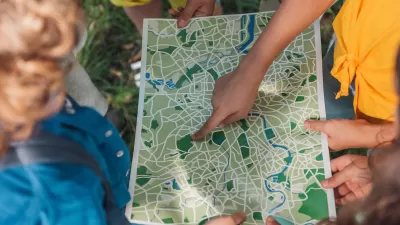In his new book, Jack Dangermond explores the transformative impact of GIS technology in solving global challenges through spatial data, highlighting its widespread application across sectors and its potential to design sustainable futures.

In The Power of Where, Jack Dangermond, cofounder of Esri, explores the transformative potential of Geographic Information Systems (GIS) technology to address some of the world’s most pressing challenges. The book introduces readers to the geographic approach, which uses spatial data to uncover patterns and provide solutions in areas like climate change, food production, urban planning, and wildlife migration. Through a series of engaging visuals, maps, and real-life stories, Dangermond demonstrates how GIS has become an integral part of everyday life—from managing city infrastructures to conserving natural spaces.
Central to the book is the concept of the geographic approach, which emphasizes spatial thinking as a tool for problem-solving. Dangermond highlights the power of GIS to visualize, analyze, and collaborate on global issues, drawing from his six decades of experience in the field. He emphasizes that GIS technology is already embedded in many sectors, helping with logistics, resource management, and environmental conservation. The book also offers a hands-on experience through a companion website, bringing the technology to life for students, educators, and aspiring GIS users.
Dangermond's narrative also addresses the role of emerging technologies—such as artificial intelligence, 3D visualization, and mobile devices—in enhancing GIS capabilities. With examples from various sectors, the book demonstrates how GIS empowers communities to design sustainable futures. Throughout the text, Dangermond conveys his passion for the power of place and highlights how spatial thinking can bridge human ingenuity with geographic solutions.
FULL STORY: The Power of Where: A Geographic Approach to the World's Greatest Challenges

Planetizen Federal Action Tracker
A weekly monitor of how Trump’s orders and actions are impacting planners and planning in America.

Congressman Proposes Bill to Rename DC Metro “Trump Train”
The Make Autorail Great Again Act would withhold federal funding to the system until the Washington Metropolitan Area Transit Authority (WMATA), rebrands as the Washington Metropolitan Authority for Greater Access (WMAGA).

The Simple Legislative Tool Transforming Vacant Downtowns
In California, Michigan and Georgia, an easy win is bringing dollars — and delight — back to city centers.

The States Losing Rural Delivery Rooms at an Alarming Pace
In some states, as few as 9% of rural hospitals still deliver babies. As a result, rising pre-term births, no adequate pre-term care and harrowing close calls are a growing reality.

The Small South Asian Republic Going all in on EVs
Thanks to one simple policy change less than five years ago, 65% of new cars in this Himalayan country are now electric.

DC Backpedals on Bike Lane Protection, Swaps Barriers for Paint
Citing aesthetic concerns, the city is removing the concrete barriers and flexposts that once separated Arizona Avenue cyclists from motor vehicles.
Urban Design for Planners 1: Software Tools
This six-course series explores essential urban design concepts using open source software and equips planners with the tools they need to participate fully in the urban design process.
Planning for Universal Design
Learn the tools for implementing Universal Design in planning regulations.
Smith Gee Studio
City of Charlotte
City of Camden Redevelopment Agency
City of Astoria
Transportation Research & Education Center (TREC) at Portland State University
US High Speed Rail Association
City of Camden Redevelopment Agency
Municipality of Princeton (NJ)





























